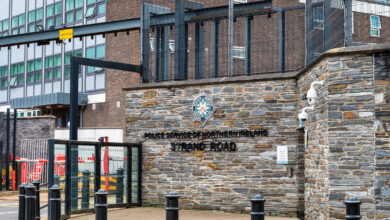The SEM Committee’s proposed decision on curtailment of wind energy: the final word?
 Dorit McCann analyses the potential consequences of the SEM Committee’s proposed decision.
Dorit McCann analyses the potential consequences of the SEM Committee’s proposed decision.
Background
The discussion on curtailment of wind energy in the SEM was initiated by the SEM Committee in February 2008 and initially resulted in the decision to apply a grand-fathering approach to curtailment issues (SEM/11/105). After withdrawal of the initial decision and further consultation, the SEM Committee issued a proposed decision on 3 October 2012 (SEM/12/90).
Balancing Exercise
In reaching the proposed decision, the SEM Committee has attempted to balance the impact on the all-island consumer, the facilitation of the 2020 renewables target and the need to promote a stable investment environment. The proposed decision is a u-turn from the SEM Committee’s previous decision as the SEM Committee is now proposing to curtail wind energy on a pro-rata basis with a defined curtailment limit. This means that all operational wind farms will be turned down on an equal basis in the event of curtailment.
Under the proposal, firm and partially firm generators will be paid compensation if they are curtailed but only up to defined curtailment limits. Essentially, this means that compensation levels will reduce in line with increasing levels of wind connection under a sliding scale mechanism.
Under this mechanism, full compensation for firm and partially firm generators will only continue up to a fixed point, i.e. the defined curtailment limit. The defined curtailment limit is a combination of a renewable penetration threshold and a date threshold, in other words the earlier of:
- the confirmed achievement of 75% of the 40% renewable target on the island of Ireland (i.e. 30%); or
- 1 January 2016.
Once either of these limits has been reached, firm and partially firm generators will continue to receive compensation but the level of compensation paid out to wind generators for curtailment in that year will reduce by one quarter each year until no compensation is available for curtailment. The long stop date beyond which no compensation will be payable to firm generators is therefore 2020.
The SEM Committee also states that it has considered the importance of reducing or minimising overall curtailment levels in line with the requirements of the Renewable Energy Directive (2009/28/EC). It remains to be seen whether the proposed decision and the SEM Committee’s other workstreams are sufficient to comply with the obligations in the Renewable Energy Directive.
Comment
With the increasing penetration of wind energy on the island of Ireland, the curtailment of wind energy is a key issue for generators and investors. The proposed decision appears to strike the appropriate balance between protecting consumers and supporting investment in wind energy which will help achieve the 2020 renewable target on the island.
However, the proposed decision is complex and will undoubtedly be difficult to implement in an efficient, transparent and cost effective manner. For example, the SEM Committee admits that there is a problem in calculating the renewable penetration cap, i.e. to calculate when 75% of the 40% target has been met. In addition, Eirgrid and SONI have both said that it is not possible to distinguish clearly between constraint and curtailment events at all times and it remains to be seen whether their proposed rule set for differentiating between the two will be workable in practice. The distinction between constraint and curtailment events is important because firm wind generators will continue to receive market compensation when they are turned down due to a network constraint but would only receive limited or no compensation in a curtailment event once the defined curtailment limit has been reached.
 Dorit McCann
Dorit McCann
Head of EU, Competition and Regulation
Tel: 028 9034 8816
Email: dorit.mccann@carson-mcdowell.com





